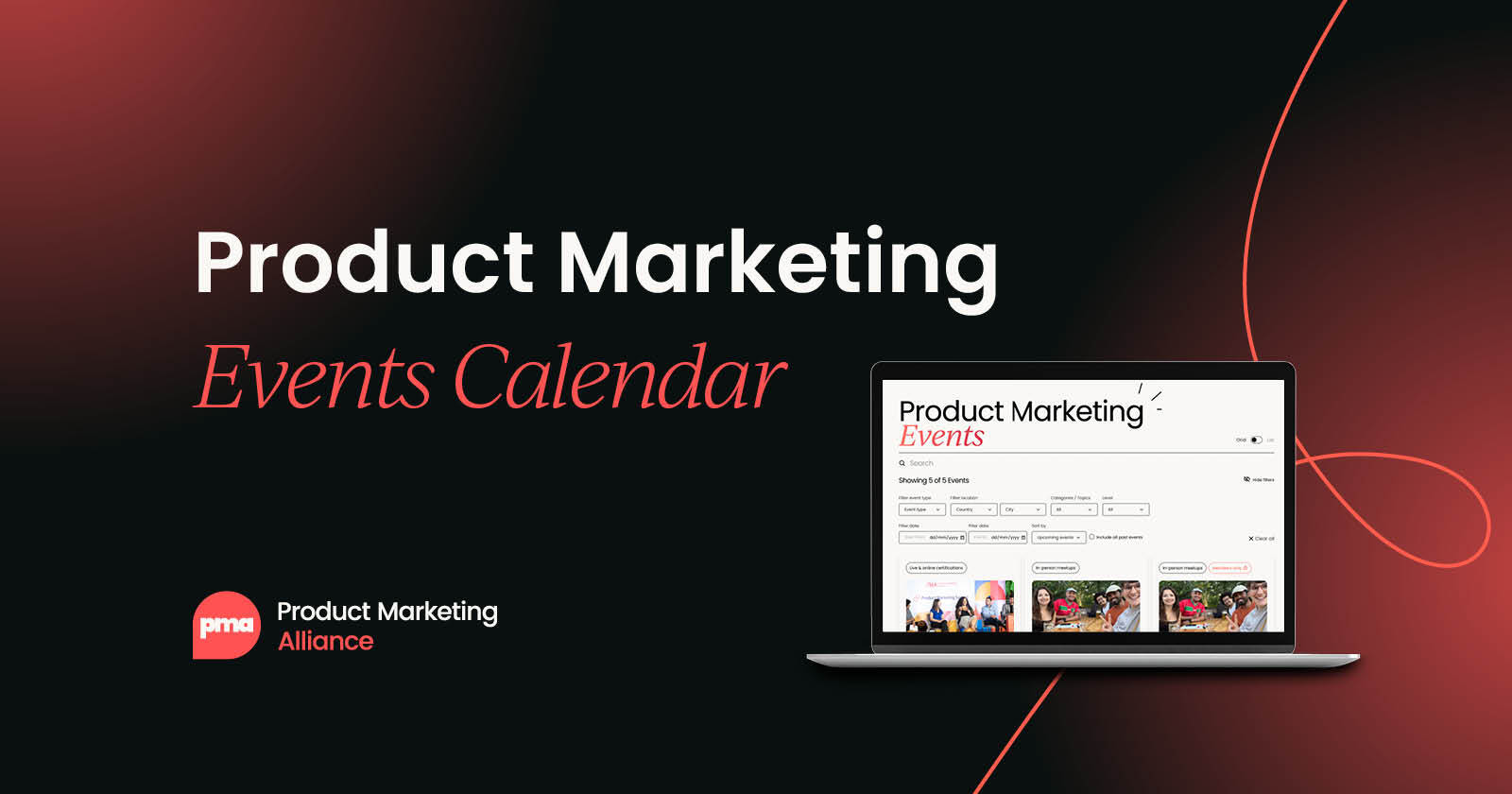We’ve all been there. Stuck in a meeting that lasts too long, and by the end of it no one’s really sure what’s happening next or how they should go about getting the task done. And sometimes the whole thing could have just been an email. Soooo frustrating!
In most cases, the root problem when it comes to unproductive meetings is a lack of planning. But never fear, it does not have to be this way! Here at PMA, we know how transformative the right template can be and we’ve decided to put together a catch-all template to get this meeting malarkey sorted out once and for all. So what does a great meeting template require?
According to PMA’s research, product marketers said they spend an average of 45.1% of their working week in meetings.
Meeting template must-haves
We’re going to share with you our full meeting agenda template that you can use to your heart’s content. As well as that, we’ve broken down the key aspects in our meeting agenda and why they’re so important. These are the things that every template should include:
- Why the meeting was arranged
This may sound obvious but you’d be surprised how many times meetings pop up in people’s calendars and the invitees don’t actually know what the main purpose is and why they need to be there.
- Meeting preparation
As the organizer of the meeting you need to have done your homework beforehand, so you know exactly what your aims are and what you need from the attendees. Remember to research possible pain points that might crop up during the discussion. For example, if your meeting is about creating a launch pack for your product, you probably want a list of collateral and content ideas ready to go before the meeting starts.
- A breakdown of the agenda
Don’t expect your attendees to be mind-readers, you might know what’s on the agenda but they don’t. Break down the items that you want to discuss clearly. For example, you might want to discuss how you’re going to conduct customer research and you might want that work completed four months prior to your product launch date.
- Next steps and outcomes
This is a very important step and one that is strangely overlooked in a lot of meetings. You need to be crystal clear about what your expectations are following on from the meeting and make sure that everyone knows what they’re doing and when they’re doing it. Does everyone have what they need to complete a task? Is a follow-up meeting required? What you don’t want is for everyone to get carried away with creative thinking and forget to pin down actionable next steps.
Did you know that PMA members have access to 20+ product marketing templates and frameworks? And if you can’t find the template you need, we’ll create one for you! Learn more below.
The one-stop-shop, completely foolproof meeting agenda template
In this example version, we’ve used creating personas as the meeting purpose so just substitute that with whatever fits your needs.
Meeting Agenda
Date:
Time:
Location:
Aim:
For the content team to create customer personas that they can feedback to the rest of the marketing department.
Prior to the meeting:
Please read the go-to-launch plan and latest customer report ahead of the meeting (attached to this email.)
Topics for discussion:
- Opportunity to ask general questions about the project.
- Based on the customer report, how many personas should we have?
- Decide on key characteristics to include in each persona.
- Segmenting the personas by industry, job title and business size.
- Who are the potential detractors within longer sales cycles?
- Who could potentially influence our buyers in a positive way?
- Decide on delivery date for personas.
Important notes:
We are awaiting log in and usage data.
Next steps:
Content team to analyze the list of customers from sales at company level and break it down into different segments.
Deadline: 24th October
A short guide to meeting management

We can all worry sometimes about getting things wrong when we’re leading a project, especially a mission-critical one like creating a go-to-launch strategy, for example. But just remember, preparation and homework are key. If you follow our guide you can be confident in your ability to run a crucial business meeting like an absolute boss.
- Save time by sending documents in advance
A good meeting is to the point and full of purpose, so, in order to cut down on dead time, make sure to send any key documents you want the attendees to read ahead of time. For example, if your meeting is about sales numbers, send the relevant report in advance so all your precious meeting time can be spent on data analysis and important findings.
#Bonus tip: Set your meeting to 30mins or 45mins, rather than an hour, if possible. It keeps people focused and shows them that you value their time.
- Keep the invite list short
Obviously, some meetings call for more attendees than others, but a good general rule is to keep numbers as low as possible and only invite people who are directly involved in the project. If there are others that need to know outcomes then just keep them updated with an email, they’ll thank you for it!
- Send the agenda with the invite
Now that you have a great agenda template, get in the habit of sending it along with the invite. This sends a very clear message that you mean business and also helps everyone else organize their thoughts and prepare contributions.
- Have a strong opener and closer
Jot down a succinct opener to kick the meeting off to a strong start. Remind people what they’re here to discuss, why it’s important and what you hope to achieve. To close the meeting, give a brief statement of what has been discussed and outline the next steps.
What are your go-to meeting tips? Let us know in the comments below!


















 Follow us on LinkedIn
Follow us on LinkedIn



.svg?v=8154f0fdee)